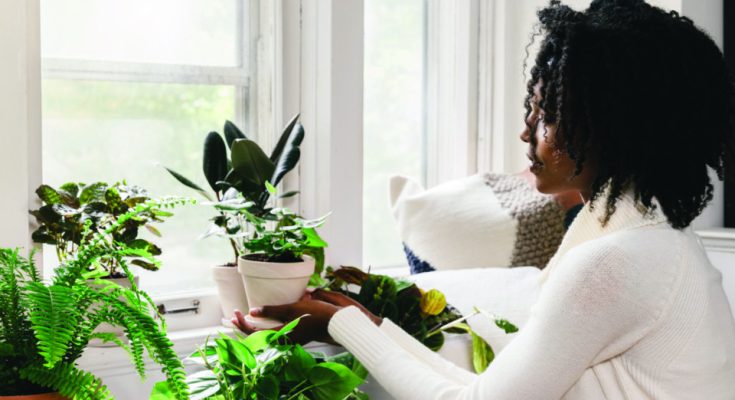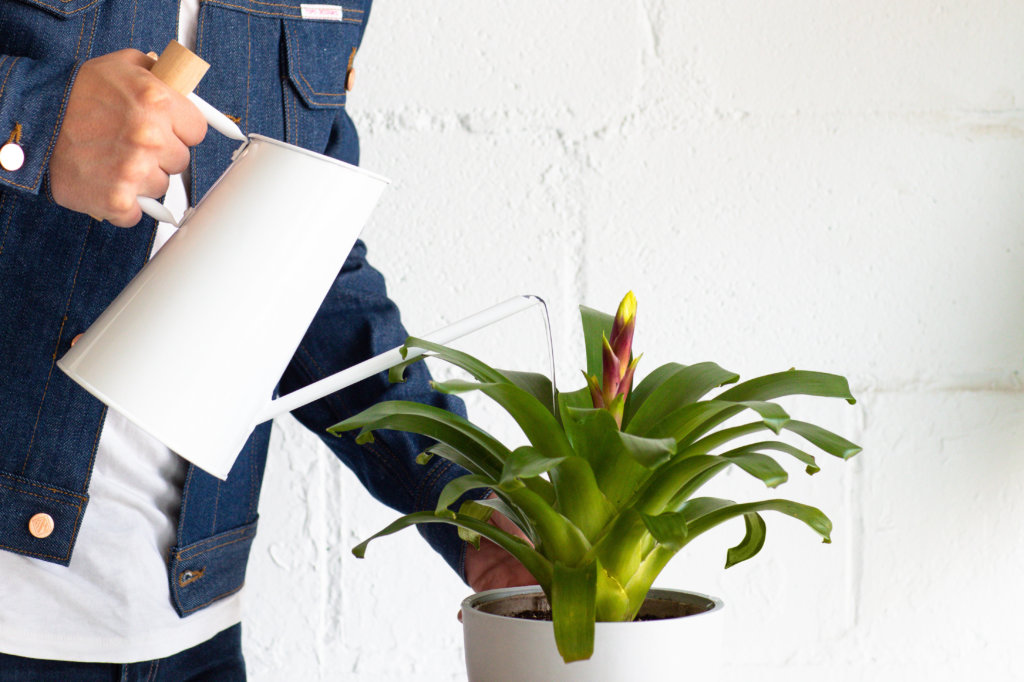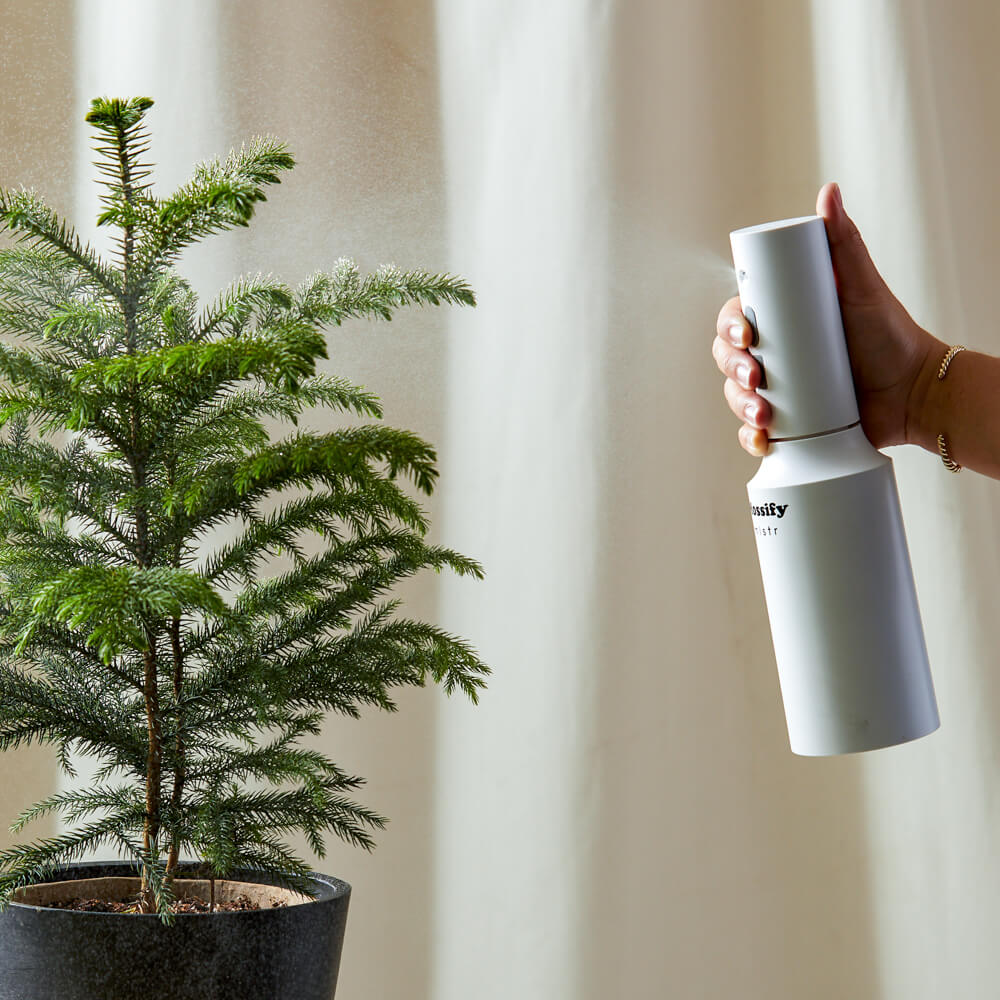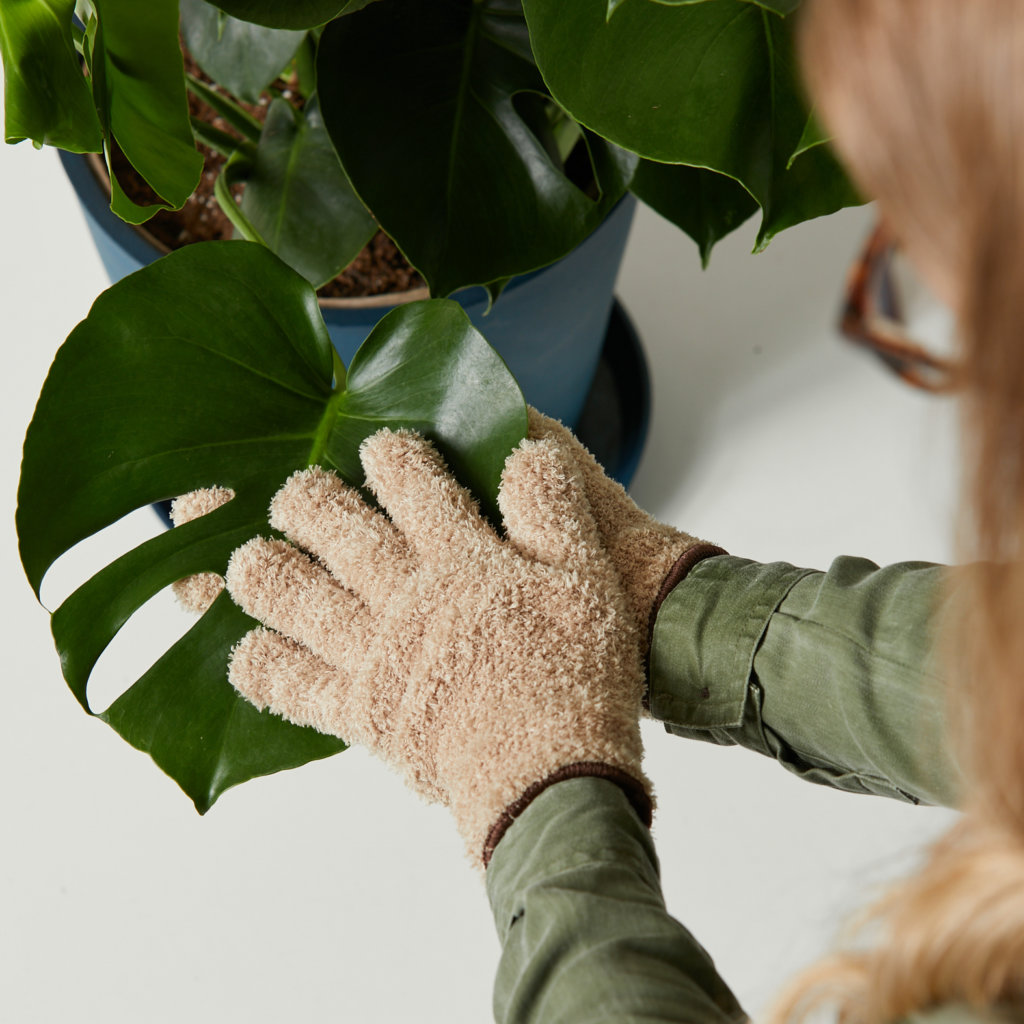During the winter, tropical indoor plants are at the mercy of drafty windows, drying furnaces, and colder temperatures. To help your indoor plants survive the cold winter months, follow these tips from Bloomscape’s own Grow-How® Team!
We’re here to make plant care easy. Check out what our Grow-How® Team has to say about keeping your plants alive this winter.
Water Less Frequently
Your potted plant will not need as much water during the winter months since the growth rate of most plants slows down considerably during this period. Overwatering can lead to root rot, especially in the winter. However, this does not mean that you should ignore them completely!
Check the Soil
Monitor the moisture of your plant regularly by checking the soil. Here are a few different ways to see if your plant needs watering:
- Using your finger, push down into the soil to see if it’s moist.
- Gauge the weight of your plant and pot. If it’s lighter than normal, it’s likely ready for a drink. If it’s still heavy from the previous watering, you can likely wait.
- Use a moisture meter.
Water Only When Necessary
Know the preferences of your specific plant. If you’re not sure how frequently your plant prefers to be watered, check out our comprehensive plant care guides to learn more about your plant’s watering needs.
How to Water
Be sure to water thoroughly—the roots of tropical plants generally like heavy (but infrequent) watering. As always, be sure to remove any excess water from your plant’s saucer once you’re done watering.
Looking for more guidance? Here’s our quick guide on indoor plant watering and how to water indoor plants correctly.
Humidity Is Key
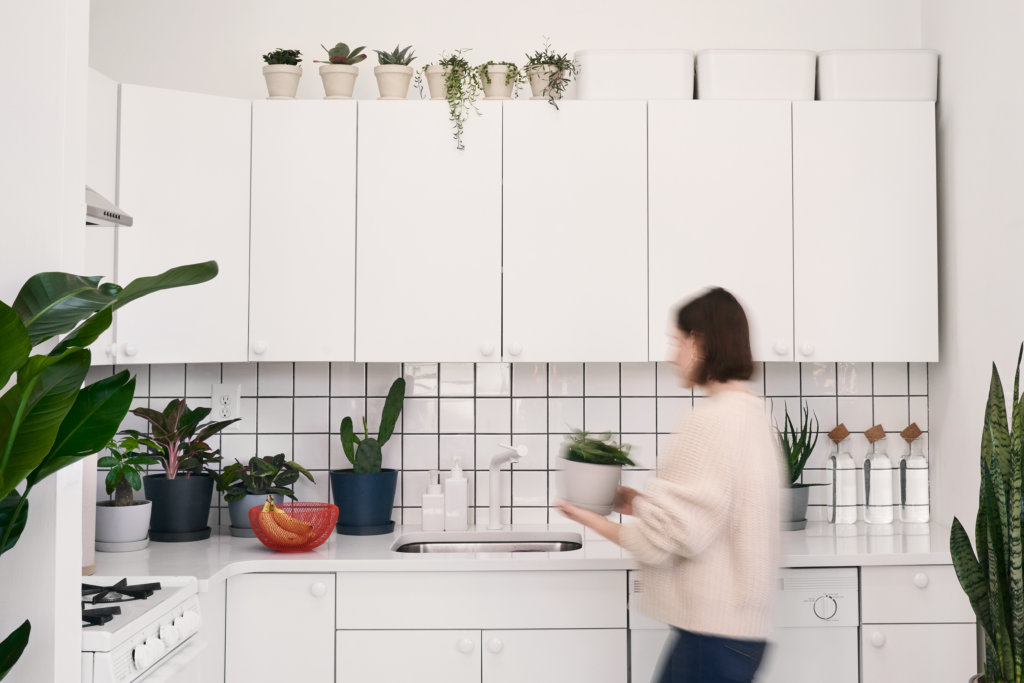
Your plants will appreciate increased humidity during the winter months. Many homes are very dry in the winter due to heaters and fireplaces, and many houseplants are sensitive to dry air. Grouping indoor plants together is an easy way to create more humidity because it creates a microclimate by trapping the humid air created as plants naturally transpire, or release water vapor, from their leaves.
You can also set up a humidifier near your plants, place your plants near a tray of water, or even on top of stones in a tray filled with water (also known as a pebble tray). If you want a more in-depth look at humidity, here’s how to increase the humidity for your indoor houseplants.
Misting can also help, but the effects are short-lived and you should be consistent and mist often.
Keep the Temperature Consistent
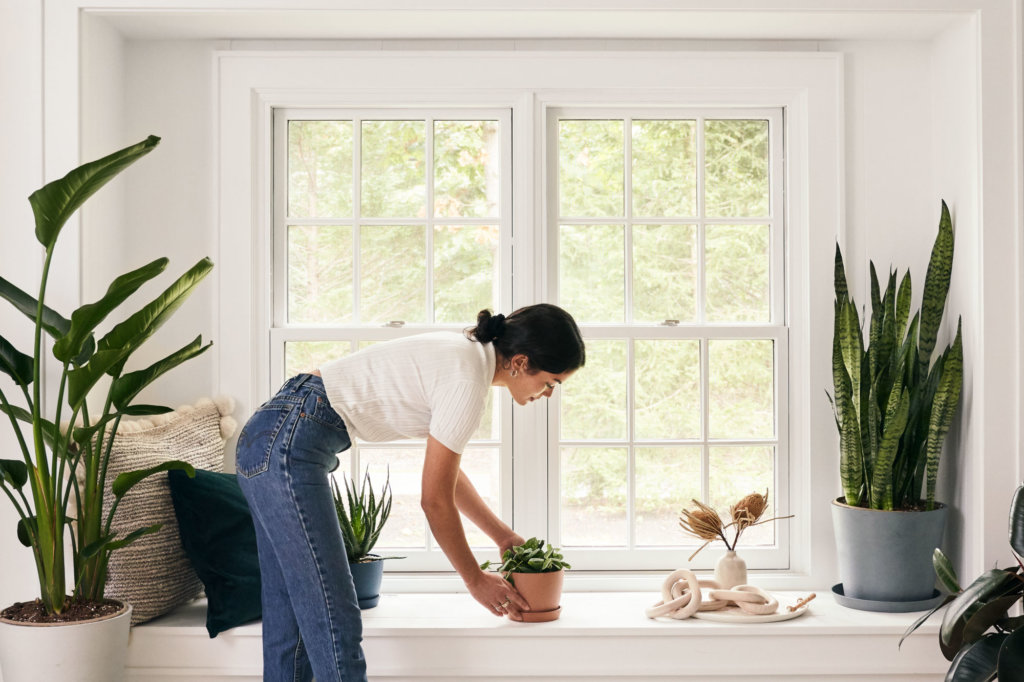
Be conscious of where your plants are located in your space. You may need to move them away from drafty areas or frosty window panes in order to protect them from the cold temperatures outside. It’s also equally important to be aware of heat sources such as heating ducts, radiators, and fireplaces.
Average day temperatures for your plants should range from 65–75°F and at night, no lower than 55°F.
Adjust Fertilizing
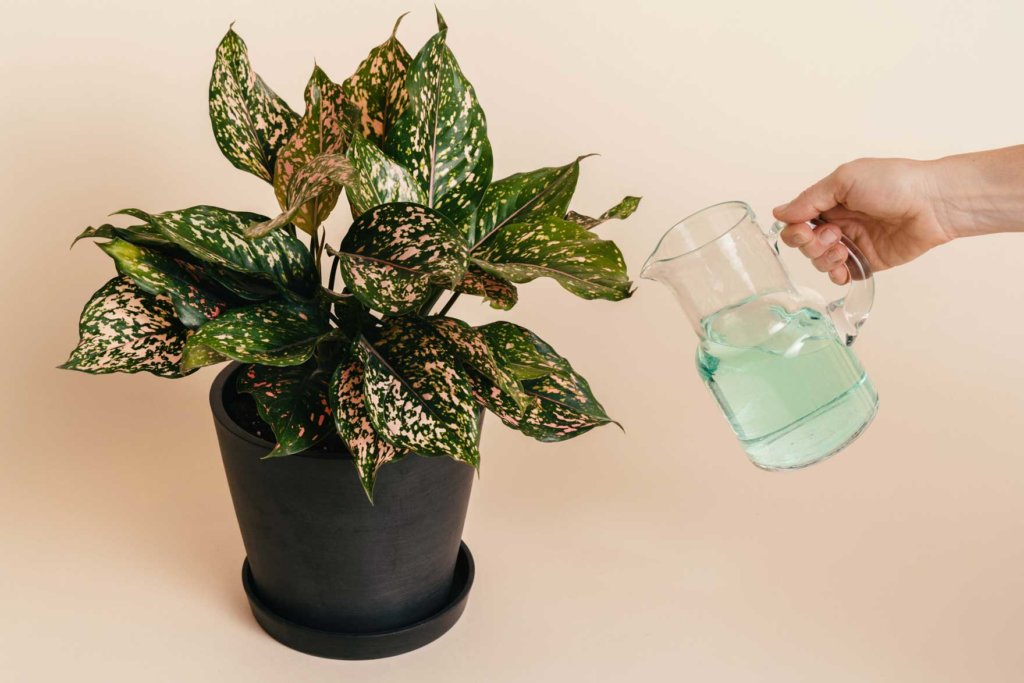
You may not need to fertilize during the winter depending on your location and climate. Where you live can affect your plants’ growth rates, so if you live in a colder environment with shorter periods of daylight during the winter, your plants may not be actively growing throughout the winter.
During this time, plant food can do more harm than good because plants will not fully utilize the nutrients and it can upset the natural growth cycle of the plant. However, if your plants are actively growing during the winter, it is okay to fertilize them as normal.
Dust Regularly
Be sure to keep your plant clean and dust-free. Insects love to hide out in dust on the leaves, which makes it harder for you to find them. Your plant may be more vulnerable in the winter if it has gone into a state of dormancy, which makes it unable to outgrow pest damage.
Also, since the humidity is much lower, your plant can become the perfect breeding ground for spider mites and other insects who love to hide in the dirt on plant leaves. Wipe your plants’ leaves regularly with microfiber dusting gloves and remember to remove any dead or yellowing leaves with a pair of clean, sharp scissors.
